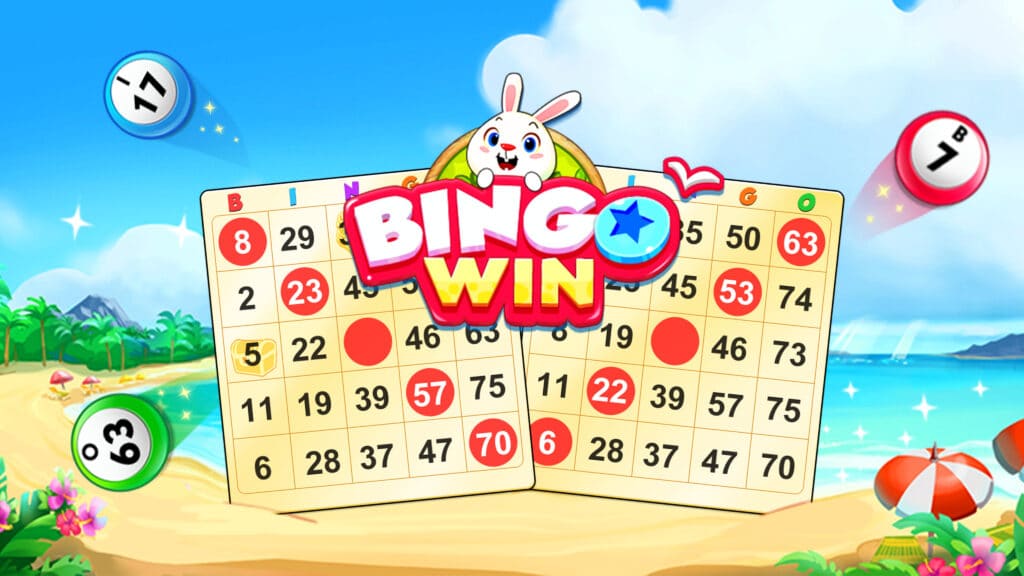Bingo is a beloved and exciting game that has captured the hearts of players worldwide. Known for its simple rules and fast-paced gameplay, it offers fun for both casual and serious players alike. Whether you're new to the game or a seasoned pro, understanding the history, rules, and fascinating facts about bingo can deepen your appreciation for this popular pastime. In this detailed guide, we will explore the origins of bingo, how to play the game, and some interesting tidbits that will engage both beginners and advanced players alike.
The History of Bingo
To understand bingo today, it’s essential to look back at its history. The game we know and love has undergone several transformations over centuries. Here’s a quick look at its fascinating evolution.
Origins in Italy
The roots of bingo trace back to 16th-century Italy, where it was originally known as “Lo Giuoco del Lotto d'Italia.” This lottery game was played as a form of entertainment and gambling, and it was officially recorded as early as 1530. The game gained popularity in Italy and spread to other parts of Europe, where various variations emerged.
The Game Evolves in France and England
In France, the game underwent significant changes. It became known as “Le Lotto,” and the rules were modified to allow for more participants. By the 18th century, the French version of the game was being played with numbered cards, and it became a social game in royal courts and among the aristocracy.
By the 19th century, the game made its way to England, where it gained even more traction. The English adapted the rules, including the addition of multiple prize categories. It was in England that the game’s format began to resemble the bingo we recognize today, though it still didn’t have the same widespread appeal it would achieve in later years.
The Birth of American Bingo
In the United States, the game underwent another transformation. During the early 20th century, bingo found its way into carnivals and fairs. A game called “beano” was popular at these events, where players used beans to mark their cards. According to popular legend, it was a man named Edwin S. Lowe who first coined the term "bingo." During a carnival in 1929, Lowe overheard a player yell "bingo" instead of "beano" after winning. The name stuck, and bingo was born.
By the 1930s, bingo was being played in churches and charity events across America, and its popularity grew rapidly. Today, it’s not just a carnival game—it’s a global phenomenon, played in casinos, online platforms, and social clubs around the world.
Understanding Bingo: The Rules
One of the reasons bingo is so popular is because of its straightforward rules. Whether you’re playing in a land-based casino, an online platform, or at a charity event, the game generally follows a similar structure. Let’s break it down for both beginners and advanced players.
Basic Bingo Setup
Bingo is typically played with a card that contains a grid of numbers. The standard card is a 5x5 grid, with the center space marked as a "free" space. The numbers on the card are arranged as follows:
- B column: Numbers 1-15
- I column: Numbers 16-30
- N column: Numbers 31-45
- G column: Numbers 46-60
- O column: Numbers 61-75
The goal of the game is to be the first to complete a specific pattern on your card, usually a line of five numbers. This can be done vertically, horizontally, or diagonally, depending on the variation you’re playing. Some bingo games may require more complex patterns, such as shapes or full-card “blackout” bingo, where every number on the card must be marked.
The Calling of Numbers
In a typical game, the bingo caller will draw numbered balls randomly and announce them to the players. As the numbers are called, players mark them off on their cards. The first player to complete the required pattern—whether it’s a line or full card—shouts “Bingo!” and wins the game. In some cases, multiple winners may be declared if two or more players complete their patterns simultaneously.
Winning Patterns
There are many ways to win in bingo, and the specific pattern required will vary depending on the game. Some of the most common winning patterns include:
- Horizontal Line: A complete line across any of the five rows.
- Vertical Line: A complete line down any of the five columns.
- Diagonal Line: A complete line from one corner to the opposite corner.
- Four Corners: A pattern that requires you to mark off all four corners of your card.
- Full House (Blackout): All numbers on the card must be marked off.
Advanced Bingo Variations
While traditional bingo involves simple patterns, there are many exciting variations available. These variations add additional layers of strategy and excitement to the game:
- Speed Bingo: In this fast-paced version of bingo, the numbers are called quickly, and players need to be sharp to keep up. This variation requires quick reactions and focuses on rapid gameplay.
- Bonanza Bingo: A variation where players receive multiple cards and attempt to complete different patterns simultaneously.
- Coverall Bingo: Also known as “blackout” bingo, this requires players to cover every number on their card. It’s often played for larger prizes and can be a thrilling challenge.
- Pattern Bingo: In pattern bingo, specific patterns—such as letters, shapes, or pictures—must be completed for a win. This variation offers a fun twist on traditional bingo gameplay.
Fun Facts About Bingo
Bingo has a rich history and a vibrant community of players. Over the years, many interesting facts and myths have emerged surrounding the game. Let’s explore some of the most fascinating facts about bingo that will surprise and engage both beginners and advanced players alike.
1. Bingo Was Once Used for Education
Before it became a casino staple, bingo was used in schools to teach children math, spelling, and even geography. Teachers used bingo cards with letters, numbers, and other educational material to make learning more fun and interactive. It was an engaging way to get kids involved in the lesson.
2. The Largest Bingo Game Ever Played
The largest bingo game in history took place in 2011 at the Resorts World Sentosa in Singapore, where more than 30,000 players gathered for a single session. This massive event was part of an effort to raise money for charity, demonstrating how bingo can bring people together for good causes.
3. Bingo is a Game of Probability
While bingo is often seen as a game of luck, there is some level of probability involved. Players can improve their chances of winning by using specific strategies, such as playing cards with fewer numbers or choosing cards with a better spread of numbers. However, as with any game of chance, there’s no surefire way to guarantee a win.
4. Bingo for Charity
Many bingo games are organized for charitable causes, with a portion of the proceeds going toward various organizations. This has been a long-standing tradition, and it’s not unusual for bingo halls to host fundraising events that contribute to hospitals, schools, and community programs.
5. Bingo’s Popularity in Online Gaming
In recent years, online bingo has exploded in popularity. Online bingo offers players the convenience of playing from home and provides a variety of rooms with different betting limits and prize pools. The rise of online gaming has helped bingo reach a global audience, with millions of players joining virtual bingo rooms every day.
Advanced Bingo Strategies
For experienced players, bingo offers an opportunity to employ strategic approaches. While bingo is mostly a game of chance, there are some tips and techniques that can increase your chances of winning. Here are some advanced strategies for players looking to take their bingo game to the next level:
1. Play Multiple Cards
One of the most common strategies for experienced bingo players is to play multiple cards at once. While this increases your chances of winning, it also requires more focus and concentration. Many online bingo sites allow players to purchase several cards at once, so it’s essential to stay organized and track the numbers as they’re called.
2. Choose Games with Higher Payouts
When playing bingo, it’s essential to choose games with higher payouts or larger jackpots. These games may have fewer players, which increases your odds of winning. Look for bingo rooms that offer progressive jackpots or special bonus rounds for more significant rewards.
3. Play During Off-Peak Hours
Another advanced strategy is to play during off-peak hours when fewer players are online. With fewer participants, your chances of winning increase since there is less competition for the prize pool. Look for quieter times when bingo rooms are less crowded to maximize your odds.
4. Manage Your Bankroll
Effective bankroll management is critical in any gambling game, and bingo is no exception. Set a budget for how much you’re willing to spend on bingo tickets, and stick to it. It’s also important to take breaks and avoid chasing losses, as this can lead to spending more than you intended.
Conclusion
Bingo has come a long way from its humble beginnings in Italy to becoming one of the most popular games in casinos and online platforms worldwide. Whether you’re a newcomer looking to learn the basics or an advanced player searching for strategies to enhance your chances of winning, understanding the history, rules, and interesting facts about bingo can make your experience much more engaging.
With its simple rules, exciting gameplay, and rich history, bingo remains a fun and accessible game for players of all levels. So, whether you’re playing in a local hall or from the comfort of your own home, enjoy the game and may the odds be in your favor!



